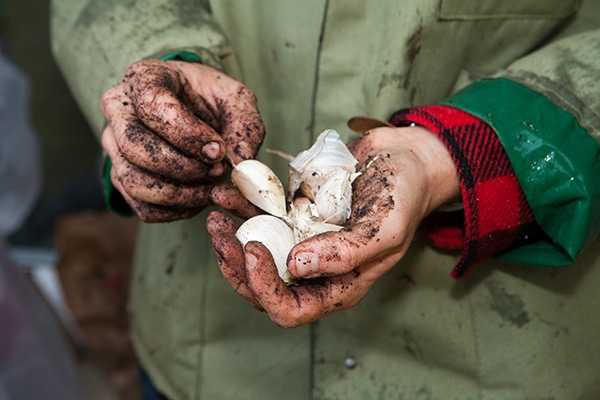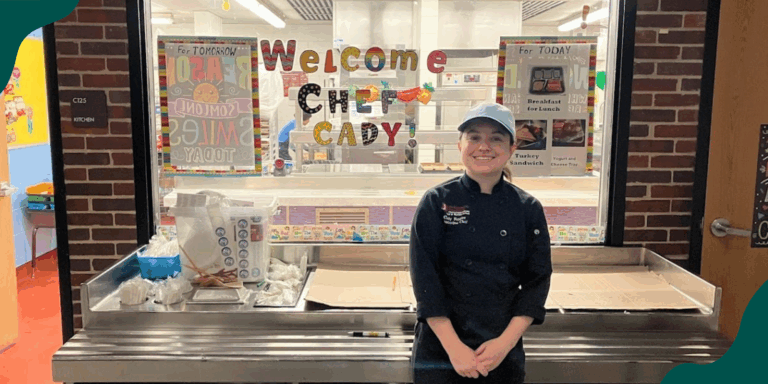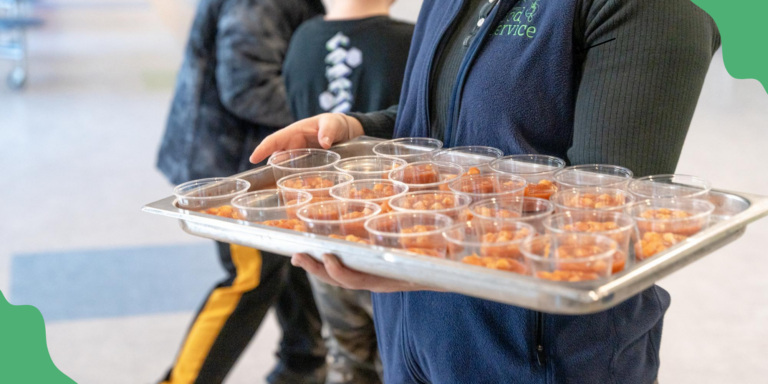Planting Wonder
Though each child was in the vicinity of a desk or chair, most were reaching and moving, talking with friends, or poking each other. The rare seat held a child sitting quietly, removed from the din, reading a book.
I was terrified.
Though each child was in the vicinity of a desk or chair, most were reaching and moving, talking with friends, or poking each other. The rare seat held a child sitting quietly, removed from the din, reading a book.
I was terrified.

 I arrived at Mrs. Howell’s door in the first week of October for our first FoodCorps lesson. She greeted me at the door muttering apologies about her rambunctious class.
I arrived at Mrs. Howell’s door in the first week of October for our first FoodCorps lesson. She greeted me at the door muttering apologies about her rambunctious class.
Behind her, a sea of 27 fourth graders roiled with motion and sound. Though each child was in the vicinity of a desk or chair, most were reaching and moving, talking with friends, or poking each other. The rare seat held a child sitting quietly, removed from the din, reading a book.
I was terrified.
In minutes, I would be tasked with leading these children through the halls, across the street, and into a borrowed community garden for a lesson on planting garlic. Over half of the children had never been to a garden before. If their energy was this explosive within the strict confines of their classroom, I could only imagine the chaos that would ensue in a new setting, with my unsure authority at the helm.
Our trip to the garden fulfilled one of the central aims of FoodCorps: to provide children hands-on learning experiences in order to connect them to their food. Through hands-on learning, children are taken to a rich setting, like the garden. They are given supplies and a set of skills. Then, they learn–not predetermined or adult-designed material, but a multi-dimensional lesson full of the complexities involved in jumping in and doing a task in real time.
When I meekly asked the students to get in line at the door, they stampeded into a gnarled shape, fighting to be first in line. After a brief standoff and much assistance from Mrs. Howell, the students formed a passably quiet line and we walked to the garden.
Outside I went over the garden rules: be gentle with living things, hands off the tools, feet on the grass. Then I swung the gate open.
In the garden, I showed the group how to place a clove of garlic in the soil, pointed end up, and pack soil around it. I sent all but a handful of the kids off to do a scavenger hunt, planning for them to plant cloves in small groups. Immediately, the garden buzzed with excitement.
“Corn! This yellow stuff is corn!” One child shrieked, and a flock of others rushed to inspect the discovery. Tools, root vegetables, bugs, and weeds, were all the objects of intense scrutiny and joy. I could hardly help the children plant garlic for the number of questions I was asked, and the number of hands that pulled my arms toward fresh discoveries.
In the classroom, the students’ exuberance had been a hindrance to learning, but in the garden, this curious energy was an asset. As a FoodCorps service member, my main teaching objective is wonder. In my experience, it is not recitation of vitamin content, but up-close experiences with the magic of gardening and cooking that will lead a wary eater toward the salad bar in the cafeteria.
Jack, a particularly lively student, approached me as I was helping his classmate place her clove of garlic. He repeated my name, bouncing at my elbow. When I turned to him, he held out a shriveled bean pod in his palm.
“What is this?” he asked, wide-eyed. I didn’t have the chance to answer before I was distracted by another exclamation.
A while later I scanned the garden to see Jack furtively dissecting the bean pod. Soon, he was at my shoulder again.
“Miss Mary, Miss Mary, it’s a bean seed! Can I plant it?”
I told him that we were planting garlic, and that we plant beans in the spring, but before I could finish, he had bounded away to show his friends the treasure.
The next time I had a moment to breathe, I looked up to see Jack crouched over a bed on the other side of the garden. He reverently made a hole for his seed, laid it in, and pushed soil over top of it, periodically glancing over his shoulder as if to ward off adult supervision. He strode through the garden with purpose, sneakily planting all the beans he’d found, and then scouring the grass for more fallen pods.
It is this type of experience that I facilitate as a FoodCorps service member. My students connect with food on their own terms. To each child, the tomato on the vine, the compost turning to rich soil, and the seedling stretching toward the sun means something different. What matters is that it means something. I led Jack to the garden and showed him that our food comes from seeds planted in soil. He took care of all the rest.
On that October day, the garlic was not planted in perfect rows. Cloves were dropped in the grass, and peeled and nibbled, and planted upside down so that their bulbs will be misshapen if they grow. But one boy held seeds in his hand and planted them in the earth, determined to grow food.

The Policy Brief: 2025 State Policy Updates

Alumni Spotlight: Cady Molloy, School District Executive Chef

6 Careers in Food That Make a Difference